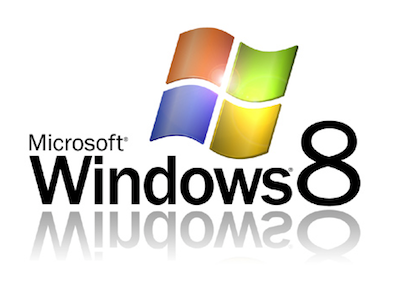Windows 8 to Support Native ISO and VHD Mounting
Mount those ISOs in Windows 8 without any additional tools.
Many of you have likely handled disc image files or even virtual hard drives. Sometimes there's no need to burn a DVD if you already have the disc image on your hard drive. While there is third-party software that will quickly and conveniently mount a disc image so that it appears as a DVD drive, such functionality will be baked into Windows 8.
Rajeev Nagar, principal group program manager for Windows, detailed Windows 8's built-in ISO and VHD mounting support.
"So how does this work in Windows 8? It’s quite simple – just 'mount' the ISO file (you can select mount from the enhanced Explorer ribbon or double-click or right-click on the file), and a new drive letter appears, indicating that the contents are now readily accessible," he wrote. "Underneath the covers, Windows seamlessly creates a 'virtual' CDROM or DVD drive for you on-the-fly so you can access your data."
Windows 8 will also support mounting of virtual drives.
"The Virtual Hard Disk (VHD) format is a publicly-available image format specification that allows encapsulation of the hard disk into an individual file for use by the operating system as a virtual disk in all the same ways physical hard disks are used," Nagar explained. "VHDs are handy for portability of system settings or to play back what has been saved as a snapshot of a system."
"Accessing a VHD in Windows 8 is as simple as what we’ve done with ISO files, but there is one important difference: rather than appearing as a removable drive (as is the case with ISO), VHDs appear as new hard drives," wrote Nagar.
Check out a demo of this function in the video below:
Get Tom's Hardware's best news and in-depth reviews, straight to your inbox.
-
nforce4max I personally hate the ribbon, all it should be is just right click and be done with it.Reply -
runswindows95 This is handy considering I use ISO's to install a lot of my programs. Maybe I might just stick with my XP system till 8 is launched.Reply -
mightymaxio runswindows95This is handy considering I use ISO's to install a lot of my programs. Maybe I might just stick with my XP system till 8 is launched.lol windows XP fail, thats like saying yeah I think im gonna stick with my windows 3.1 till something with less of a footprint comes out.Reply -
Firehead2k unless they get support for all the other image formats as well , this is just a half-***ed attempt.Reply -
techseven Reply9309079 said:lol windows XP fail, thats like saying yeah I think im gonna stick with my windows 3.1 till something with less of a footprint comes out.
Skipping over Windows 7 might be a good idea for anyone who is happy with windows XP, seems to me there will be many new and useful features in Windows 8
Personally, I am done with windows XP... -
mikeangs2004 I know when I change partitions on a dual boot system (Ubuntu and Windows) the GRUB gets corrupted. Will this VHD and image mounting thing affect this GRUB? I am not sure if Windows 8 will address this realm of issues. Also which HDD should you install the boot loader (Ubuntu HDD or Windows HDD)? I install it onto the Ubuntu HDD under advanced installation. This way Windows Backup works correctly if I boot to Windows w/o using GRUB.Reply -
zybch Firehead2kunless they get support for all the other image formats as well , this is just a half-***ed attempt.The problem is that pretty much all of your other formats are not formalized standards in any way.Reply -
dioxholster haha too late, barely anyone uses discs now. and i hate the stupid ribbon! sticking with 7.Reply

